Once your adult leafcutter bees begin to hatch, your Backyard Pollinator will soon become the most efficient pollination system you’ve ever seen. When the buzz begins you will have no problem getting close to observe what those busy bees are up to.
Read these notes to discover what hardworking little bees they are. BEE sure to share your newfound knowledge with your friends and family, they will BEE amazed too!
Native to SW Asia and NE Europe, this particular species of leafcutter bee (megachile rotundata) was introduced to North America in the 1930’s.
Farmers who went to Europe as soldiers in WWI took notice of alfalfa fields being pollinated by wild populations of leafcutter bees. This led to the semi-domestication of the species for commercial use in North America.

Photo by Mark Higgins
Leafcutter bees mating
After hatching male and female leafcutter bees mate. The males have completed their purpose and die within a few days.
Each female bee performs many tasks such as locating a nesting site, cutting leaf material to create cells, gathering pollen and nectar and laying eggs.

Photo by Mark Higgins
Female bee seals off a full nesting tunnel
Two types of leaf or flower materials are cut by female bees:
- oval and curved shapes to create cells;
- very round flat pieces to cap the tunnels.
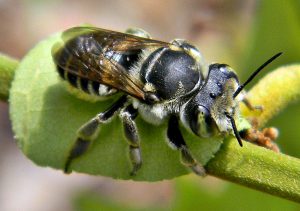
Female bee holding a piece of leaf
Photo is by Bob Peterson
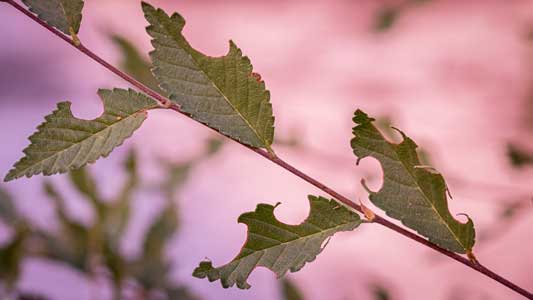
Missing pieces is evidence of a nearby leafcutter bee
As seen in the photo of the cut away styrofoam nest:
- cells have a lining of silky material that is shiny brown;
- the cells are different to the capping material at the entrance of the tunnel.

Photo by Mark Higgins
Empty cocoon, showing the silk membrane inside
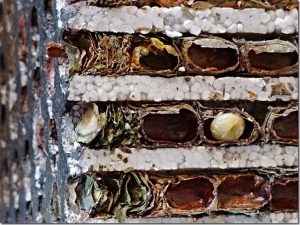
The difference between bee cells
and capping material is evident
Leaf cutter bees remain close to home collecting pollen and nectar within 100 metres or so of their nest. This makes them a popular addition to flower gardens and backyard spaces. Pollen is carried on their hairy abdomen and then deposited inside the nesting holes. Small bits of pollen fall off these hairs as they forage among flowers resulting in effective cross pollination.
Leafcutter bees are very efficient pollinators of many varieties of flowers. They can forage on even the tiniest of flowers such as catmint or lavender. In flower gardens rose bushes and pansies are readily cut for nesting material.
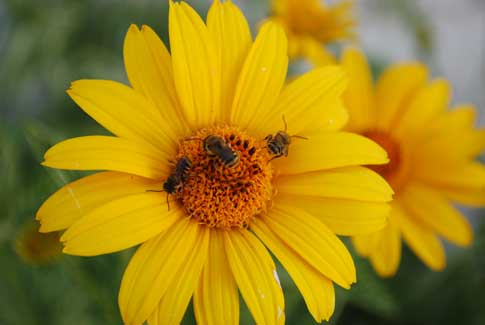
Three bees sit quietly on a sunflower
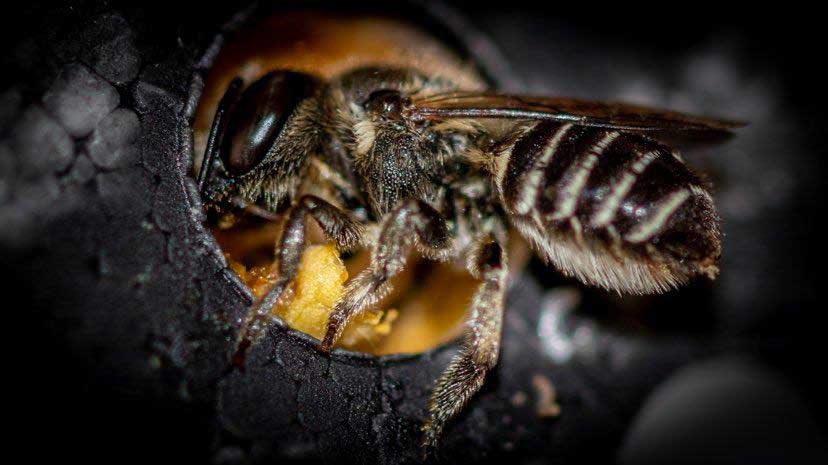
A female bee works to seal off her nesting tunnel full of cocoons
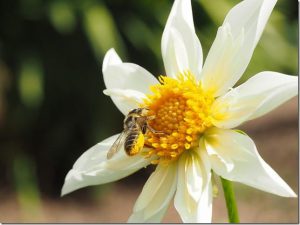
Very industrious female bee on a dahlia flower
In a commercial setting leafcutter bees are used to pollinate alfalfa, carrots, other vegetables and some fruits like wild blueberries. A tenfold increase in the pollination of alfalfa flowers is noticed when leafcutter bees are distributed into our fields.

A wild blueberry crop
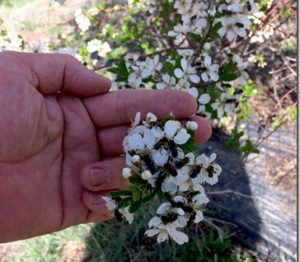
Bee enjoying fruit tree blossoms

Beautiful purple alfalfa flowers
This Bee Gets Punched by Flowers for Your Ice Cream
“Sure, cows are important. But next time you eat ice cream, thank a bee. Without them, there would be no cones, milkshakes or sundaes.
Every summer, alfalfa leafcutting bees pollinate alfalfa in an intricate process that gets them thwacked by the flowers when they release the pollen that allows the plants to make seeds. The bees’ hard work came to fruition last week when growers in California’s Kings, Fresno and Imperial counties finished harvesting the alfalfa seeds that will be grown to make nutritious hay for dairy cows.” See Full Video
